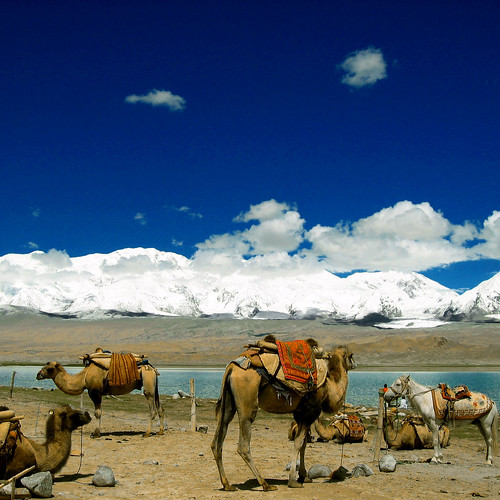Slaves, perfumes, spices, medicines, jewels, glassware: the Silk Routes (collectively known as the "Silk Road") were important paths for cultural, commercial, and technological exchange between traders, merchants, pilgrims, missionaries, soldiers, nomads and urban dwellers from Ancient China, Ancient India, Ancient Tibet, Persian Empire and Mediterranean countries for almost 3,000 years.[5]
It gets its name from the lucrative Chinese silk trade, which began during the Han Dynasty (206 BC – 220 CE), says Wikipedia.
Extending 4,000 miles, the routes enabled people to transport slaves and luxuries such as silk, satin, hemp and other fine fabrics, musk, other perfumes, spices, medicines, jewels, glassware and even rhubarb, as well as serving as a conduit for the spread of knowledge, ideas, cultures, zoological specimens and some non indigenous disease conditions[6] between Ancient China, Ancient India (Indus valley, now Pakistan), Asia Minor and the Mediterranean.
Trade on the Silk Road was a significant factor in the development of the great civilizations of China, India, Egypt, Persia, Arabia, and Rome, and in several respects helped lay the foundations for the modern world. Although the term the Silk Road implies a continuous journey, very few who traveled the route traversed it from end to end.
For the most part, goods were transported by a series of agents on varying routes and were traded in the bustling markets of the oasis towns.[6]
skip to main |
skip to sidebar
For students and parents who love education and exploration of the social sciences . . .
Search This Blog
Followers
Blog Archive
-
▼
2011
(242)
-
▼
April
(27)
- The Odyssey of a Chinese teen: Not One Less
- Qin quiz number two
- Qin quiz / Magnet geography
- Caddo Magnet in Vans competition: please vote at v...
- Westminster Abbey, neighbor to the Houses of Parli...
- Westminster Abbey, London / map
- The skit of the First Emperor of China
- Asian festival a tribute to Filipino culture on sa...
- Dishes prepared for geography class: a special exp...
- Complete the sketch and coloring of your Chinese mask
- A life of conflict and achievement: the First Empe...
- Chinese mask and skit on the life of Qin Shihuangdi
- From Tibet to the East China Sea: the Middle Kingd...
- Lhasa: capital of the Chinese region of Tibet
- The ancient internet: Silk Road caravans connected...
- Quiz on all notes Chinese next class
- "Ni hao, wo jiao Robert!"
- Clubs vend lunch & dessert during the Spring picni...
- "Give me the money:" a profile of China in the mov...
- Xi'an: home of the first Emperor as well as movie ...
- China: the Middle Kingdom
- Open notes Magnet quiz about Vietnam in the next c...
- 'Nam: from China to the South China Sea
- Than Ti of the Buddhist Temple of Bossier
- Domino theory, Gorilla in the room: the Vietnam co...
- Angkor Wat, the grand Hindu-Buddhist temple of Cam...
- Magnet High benefit on Ap 15
-
▼
April
(27)

